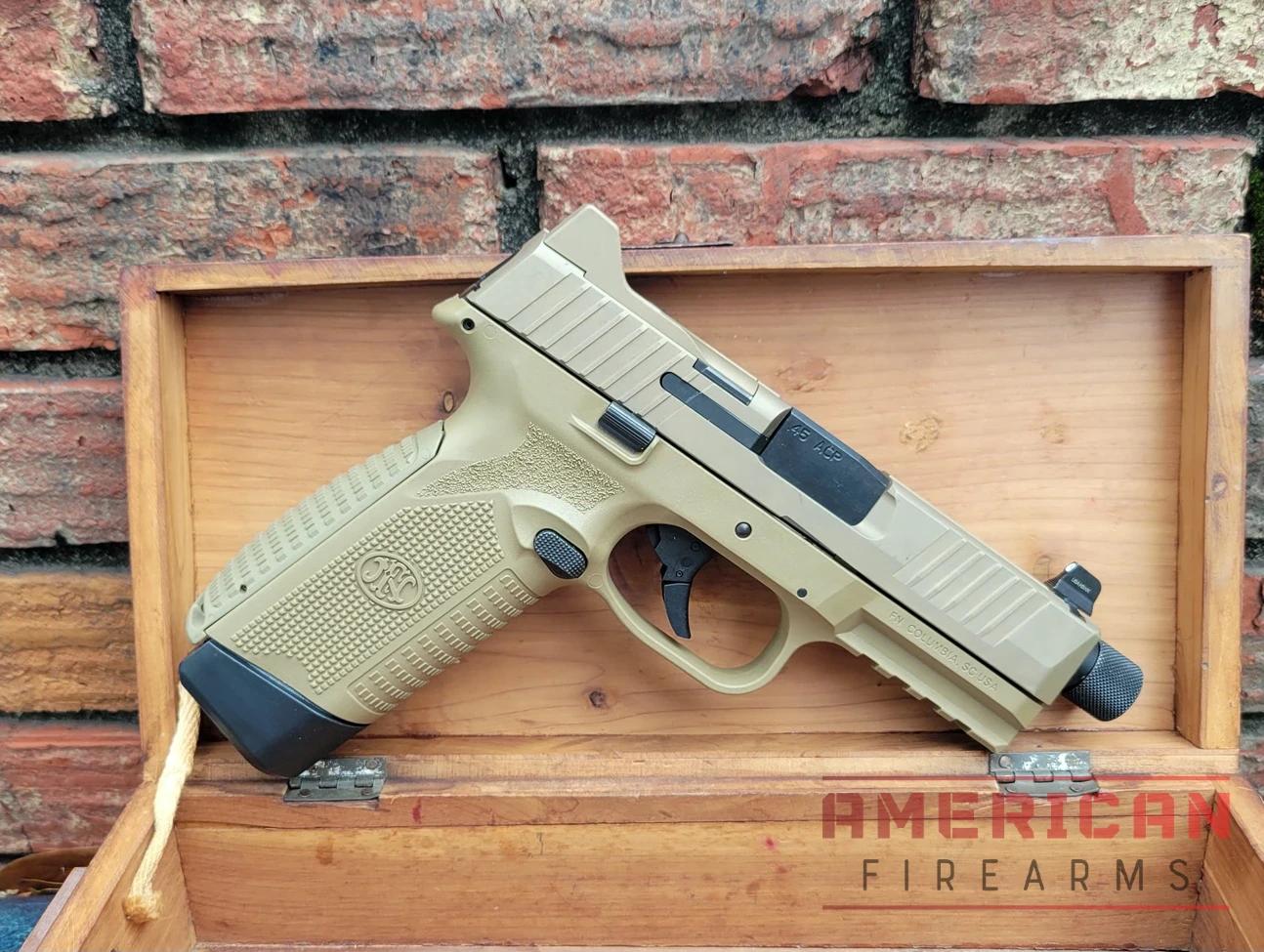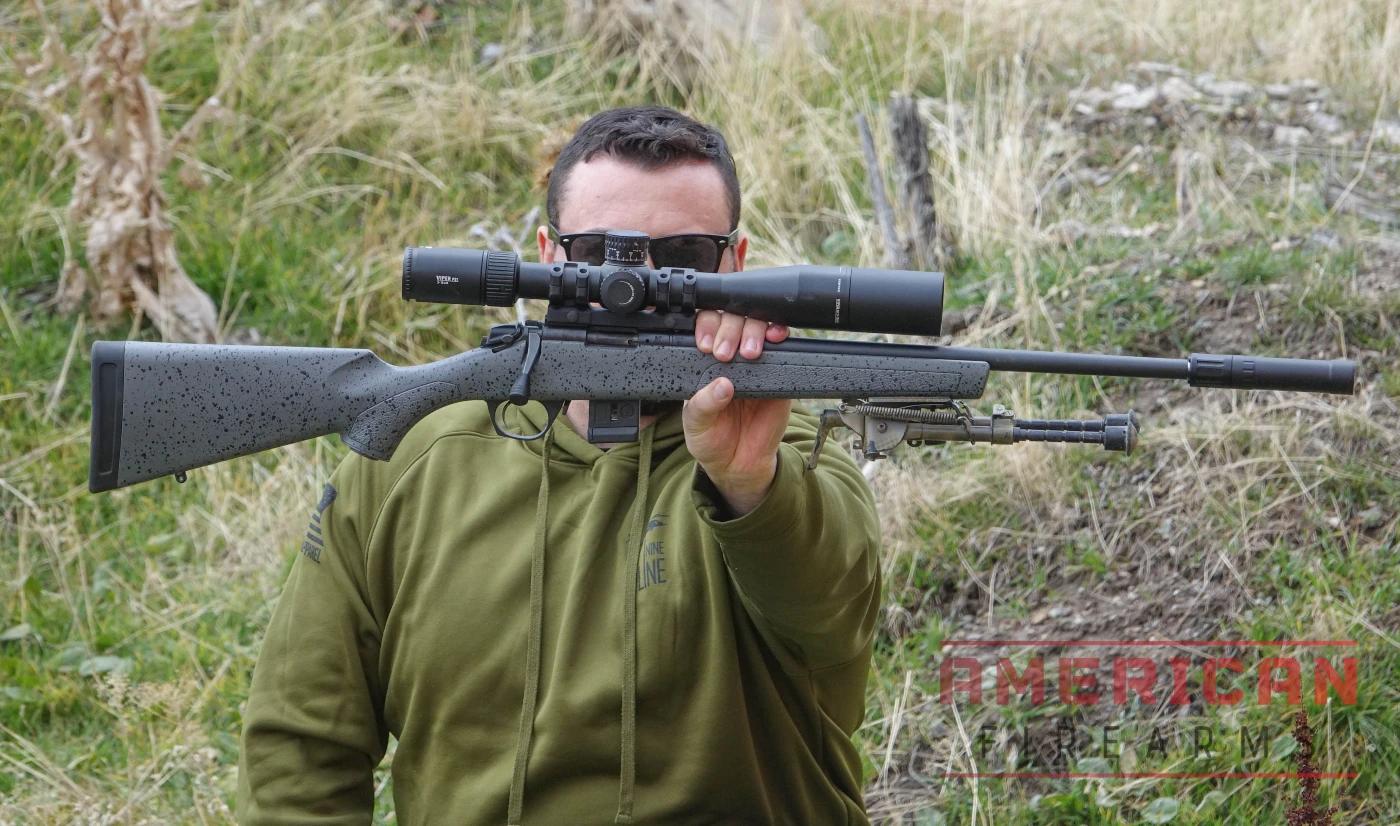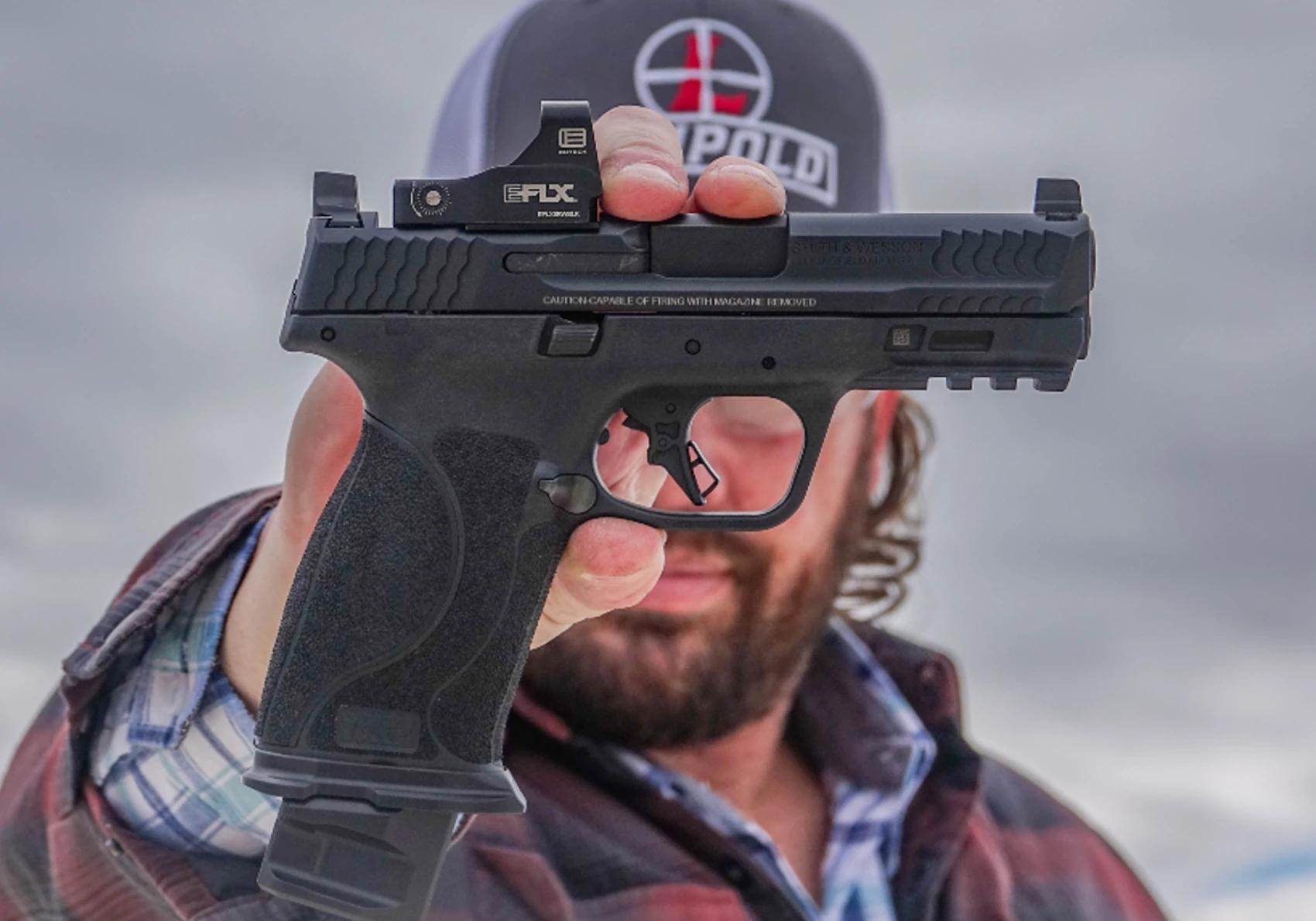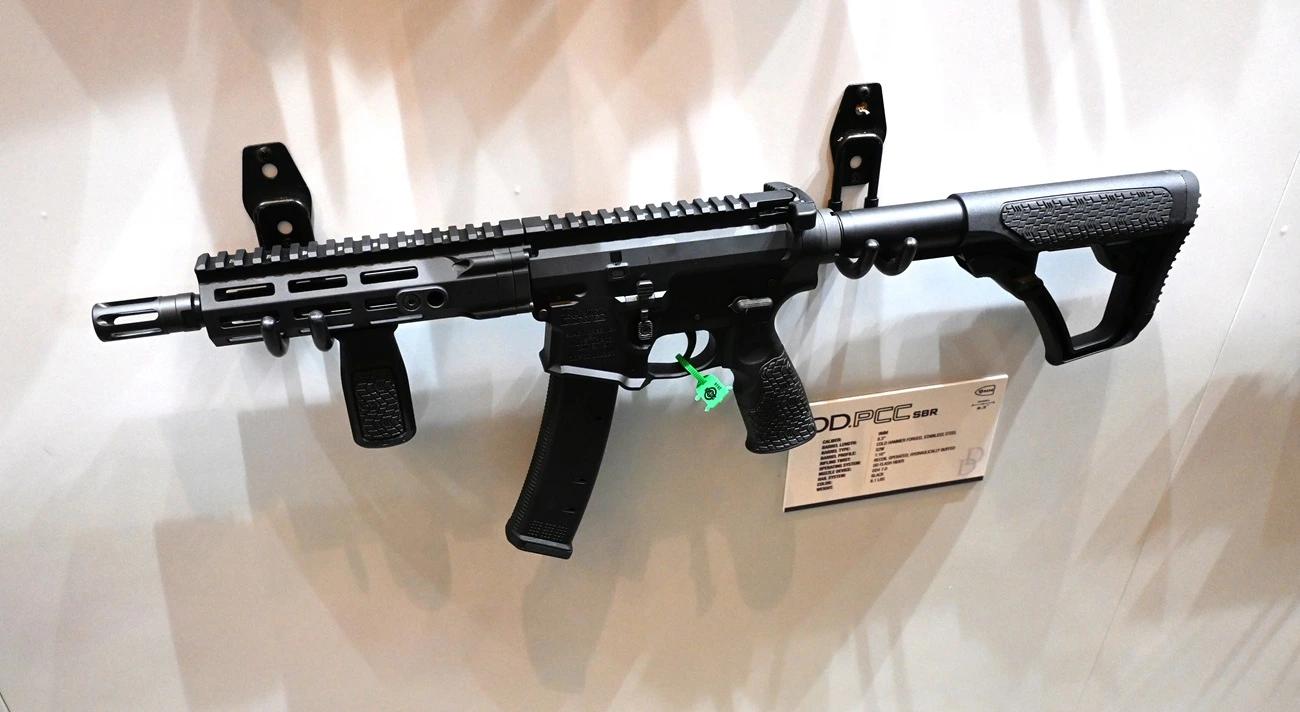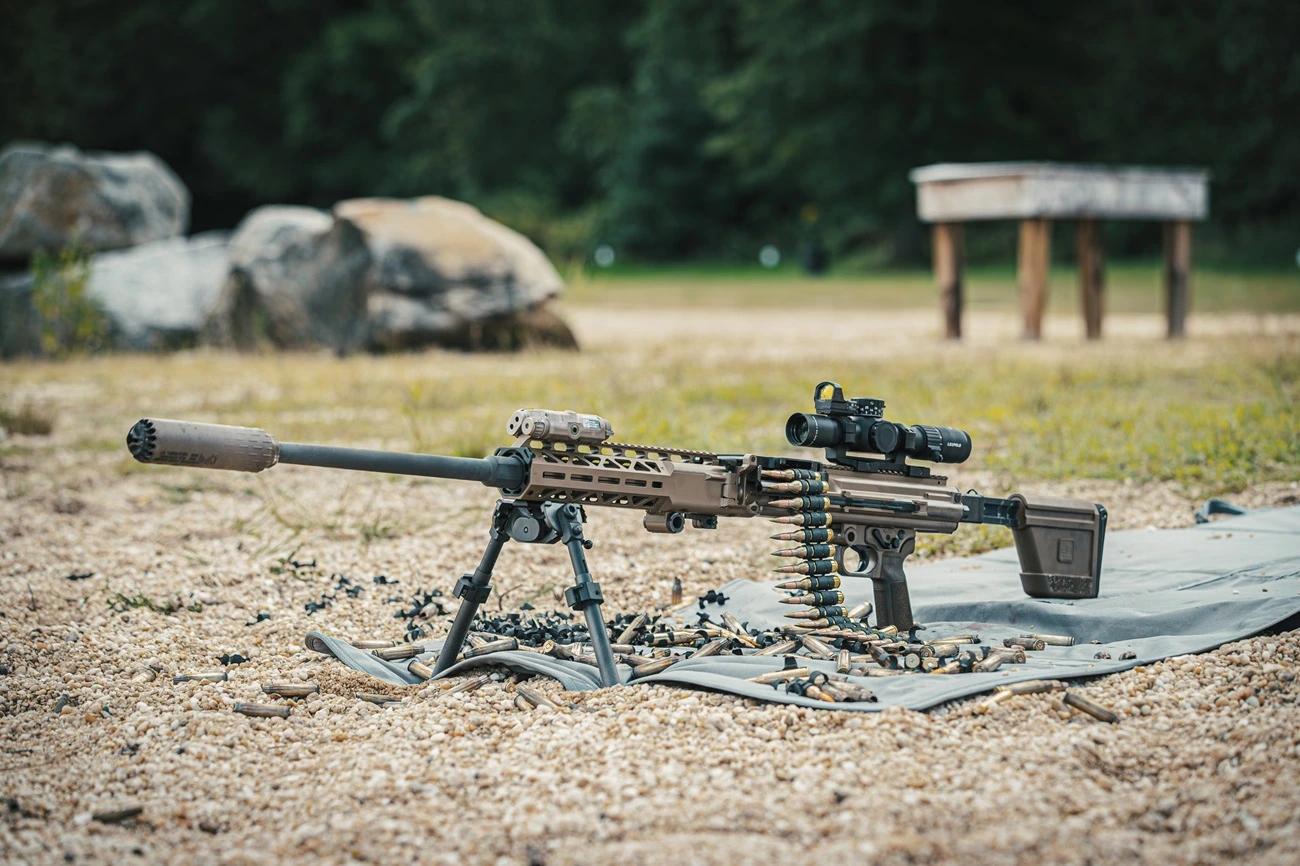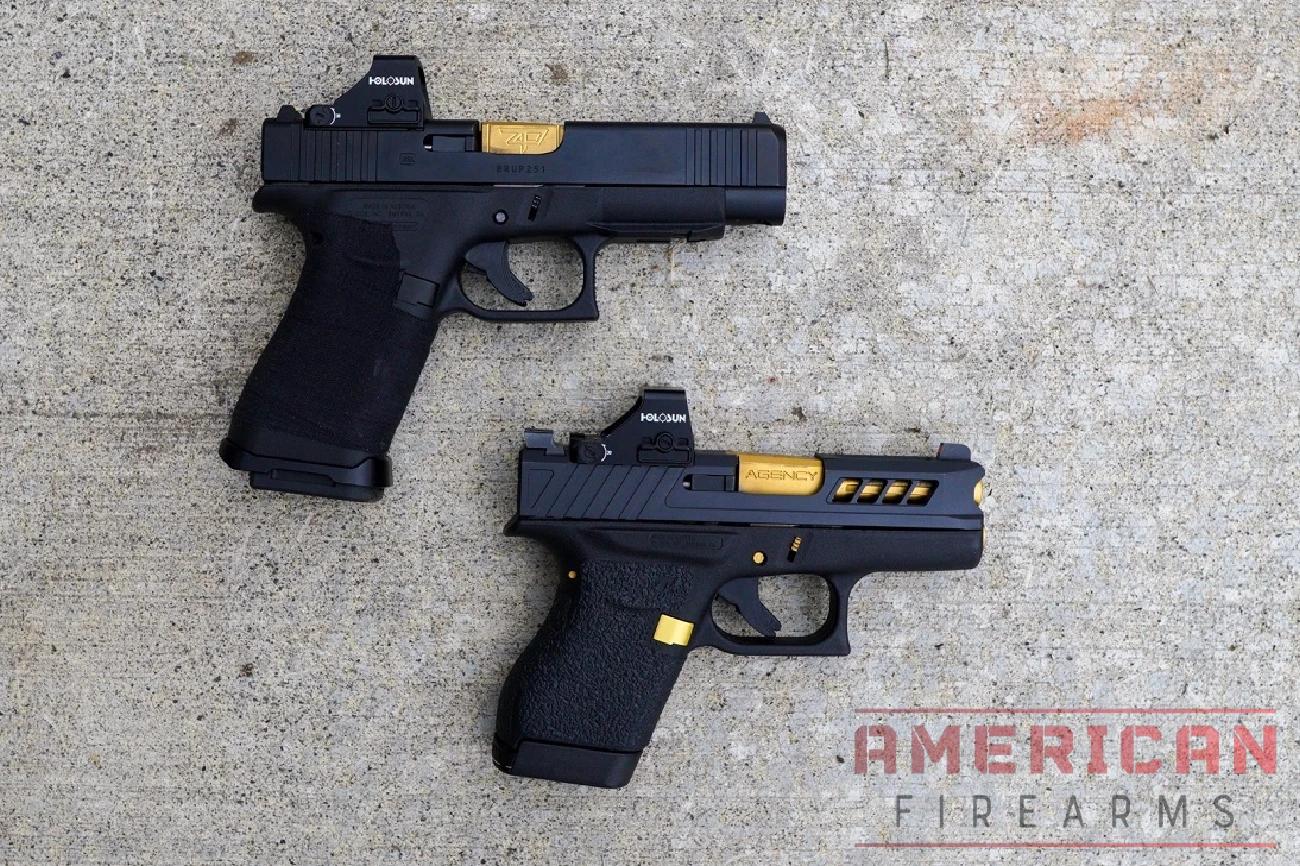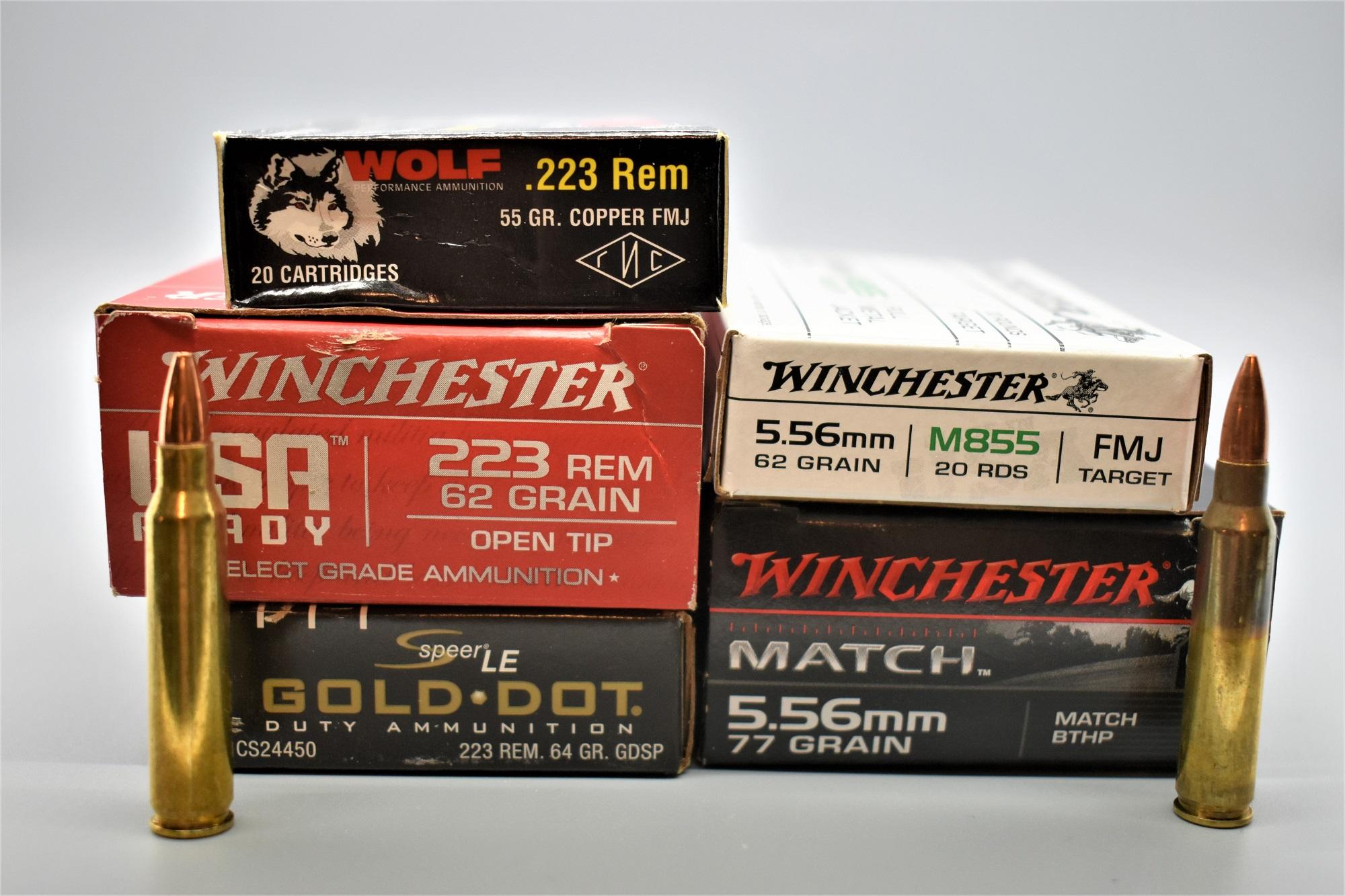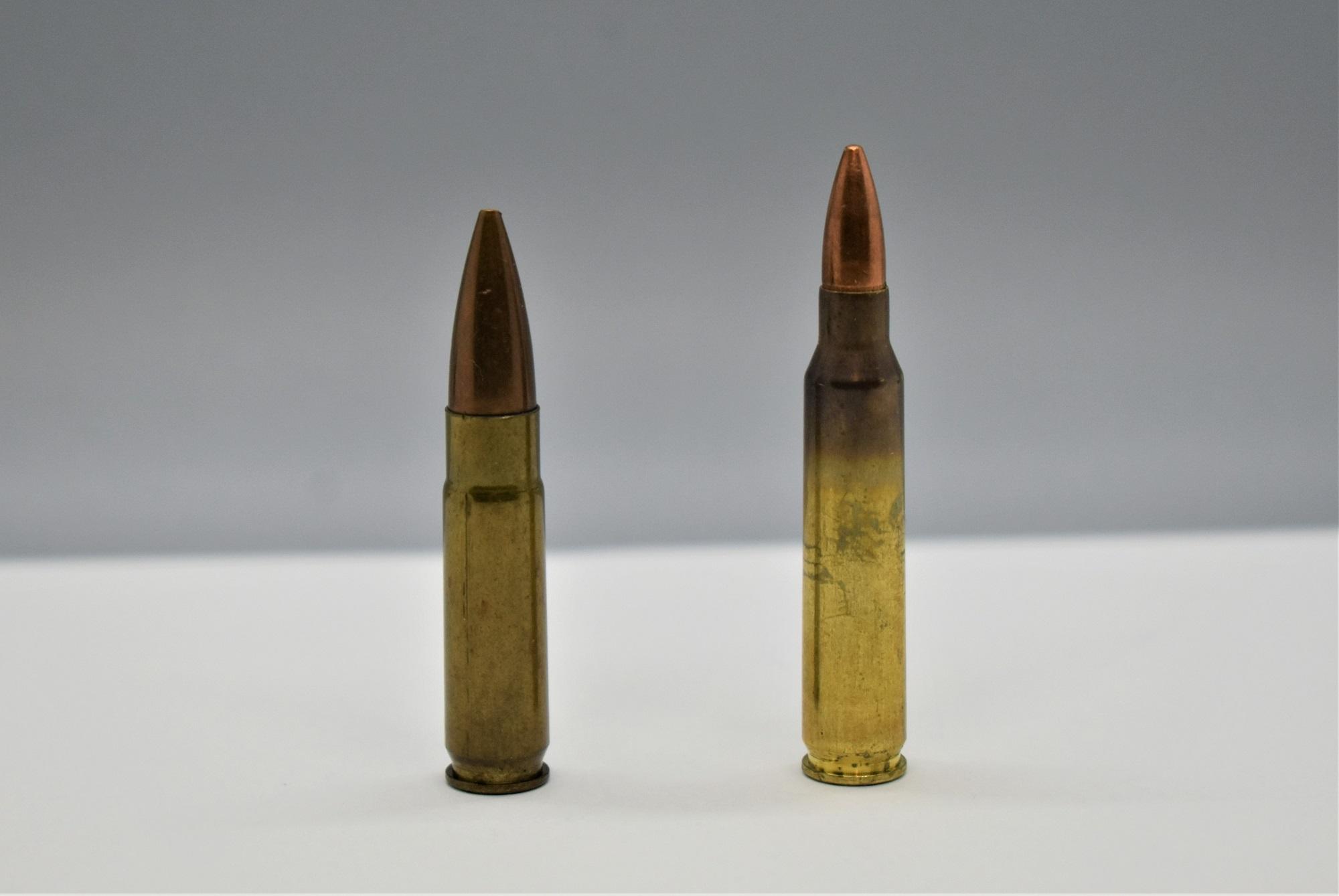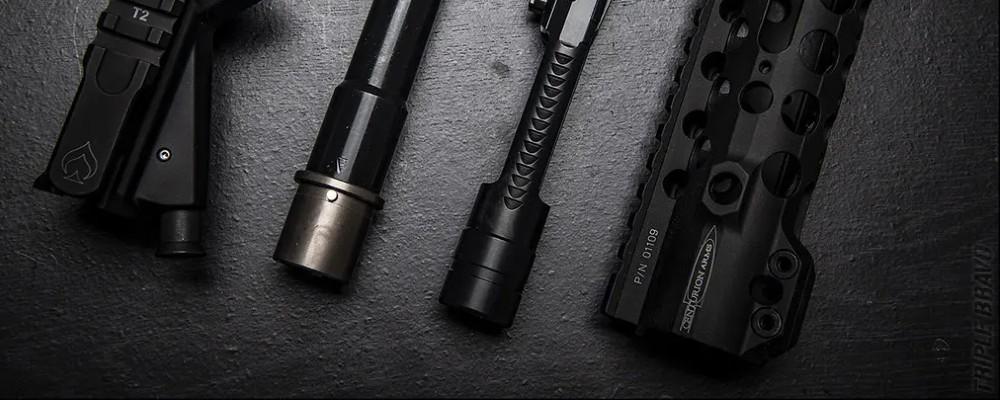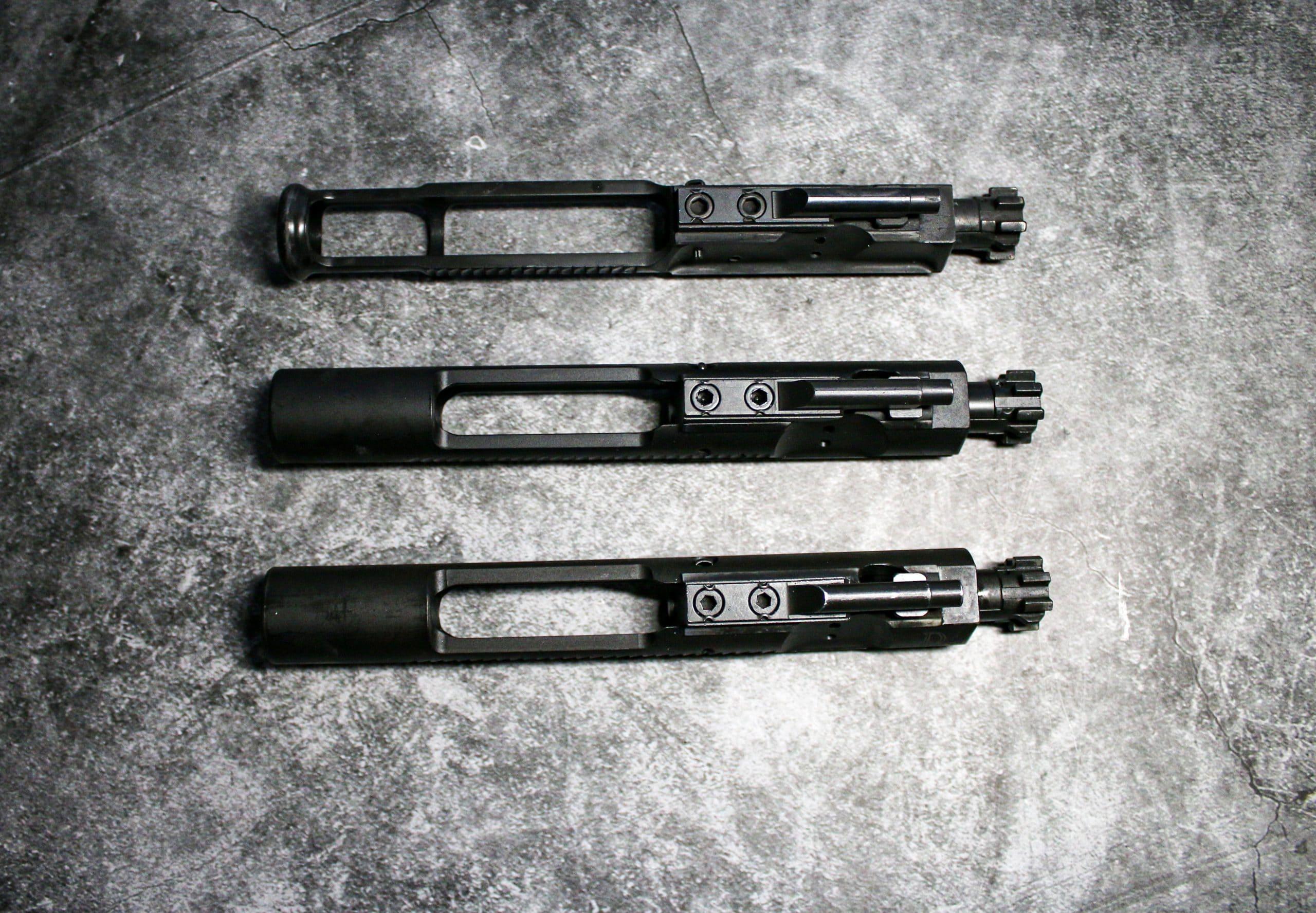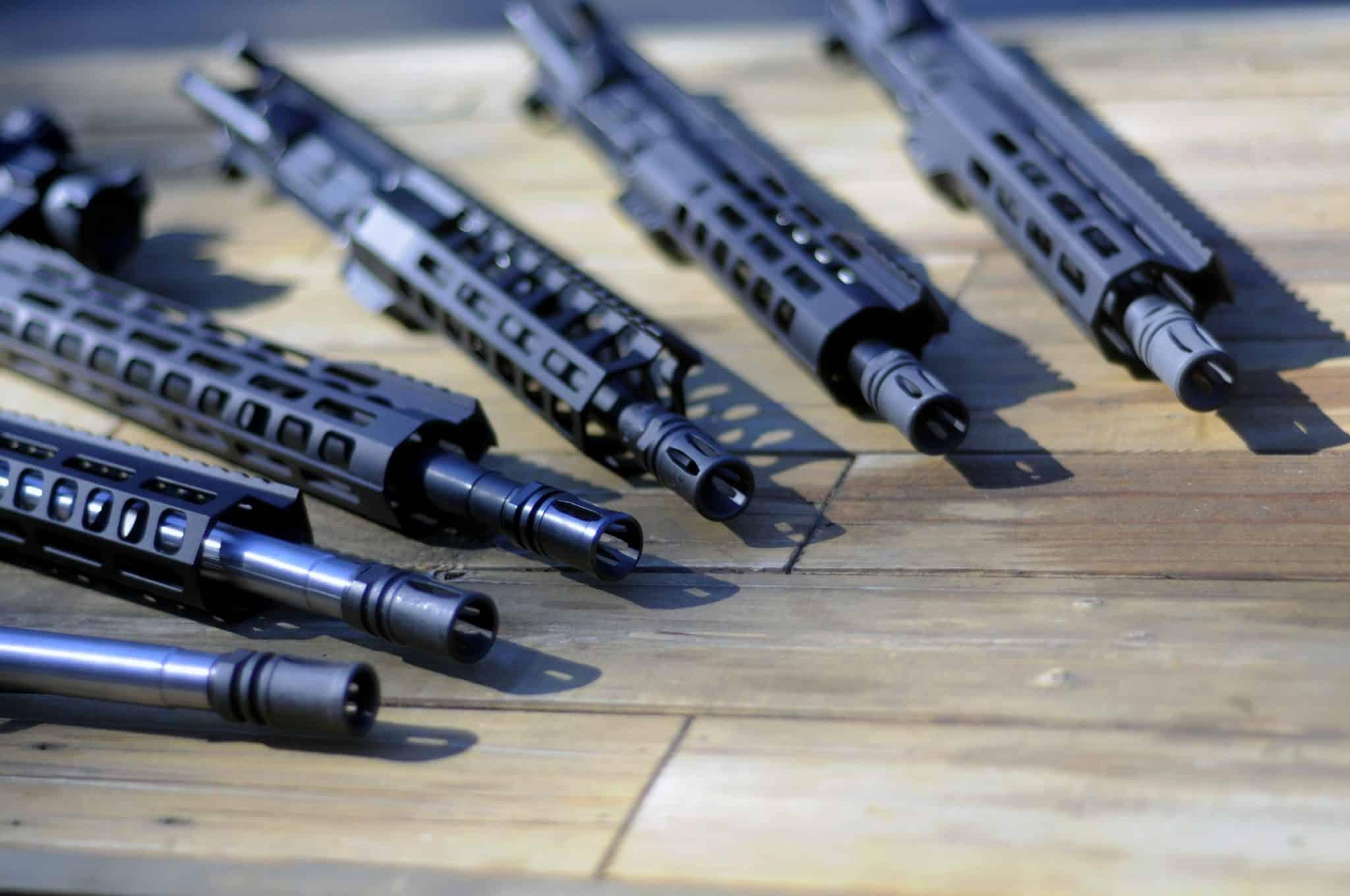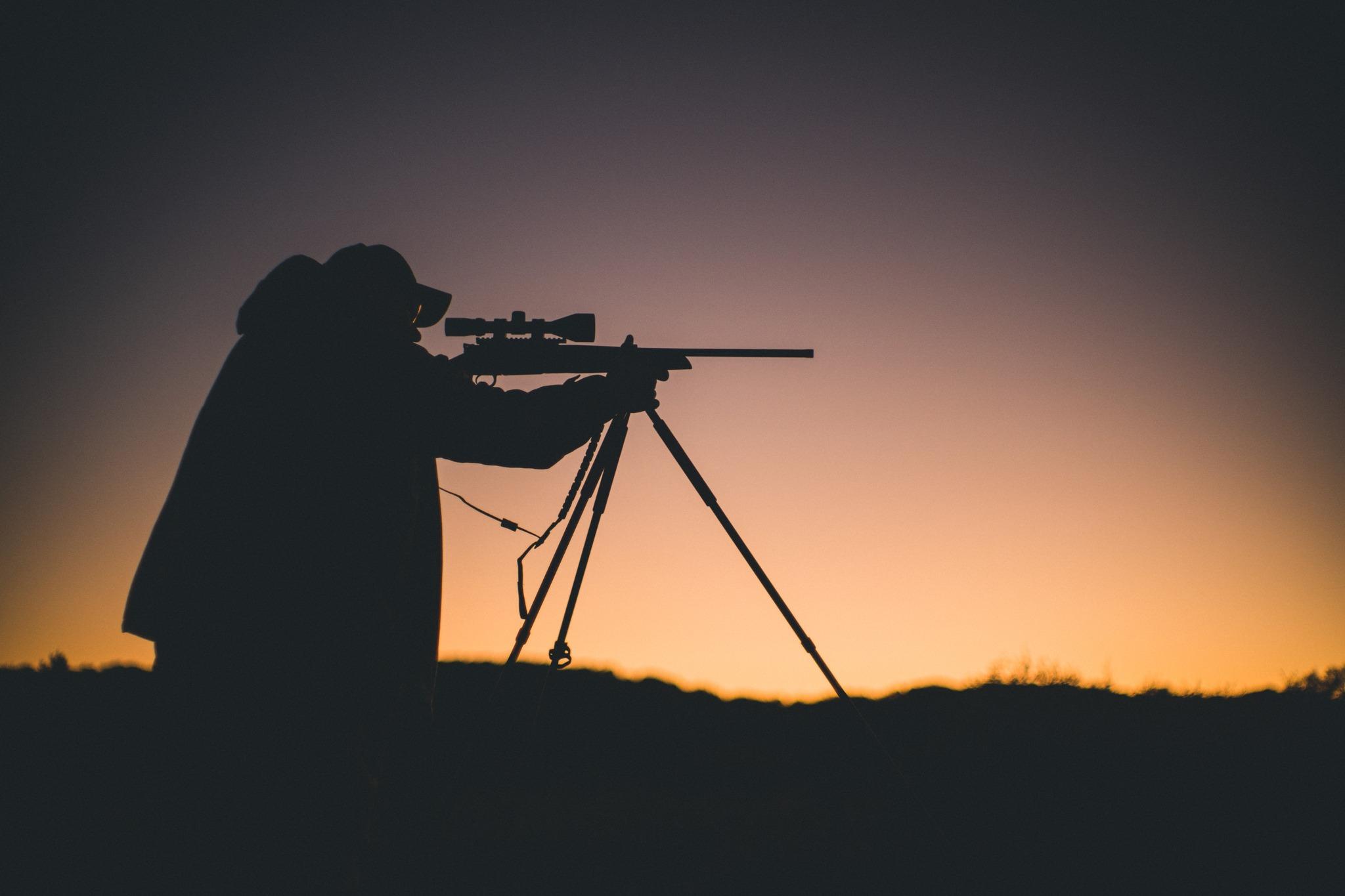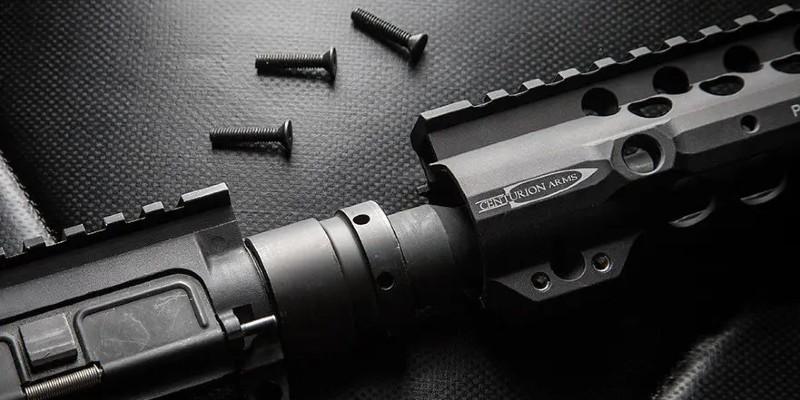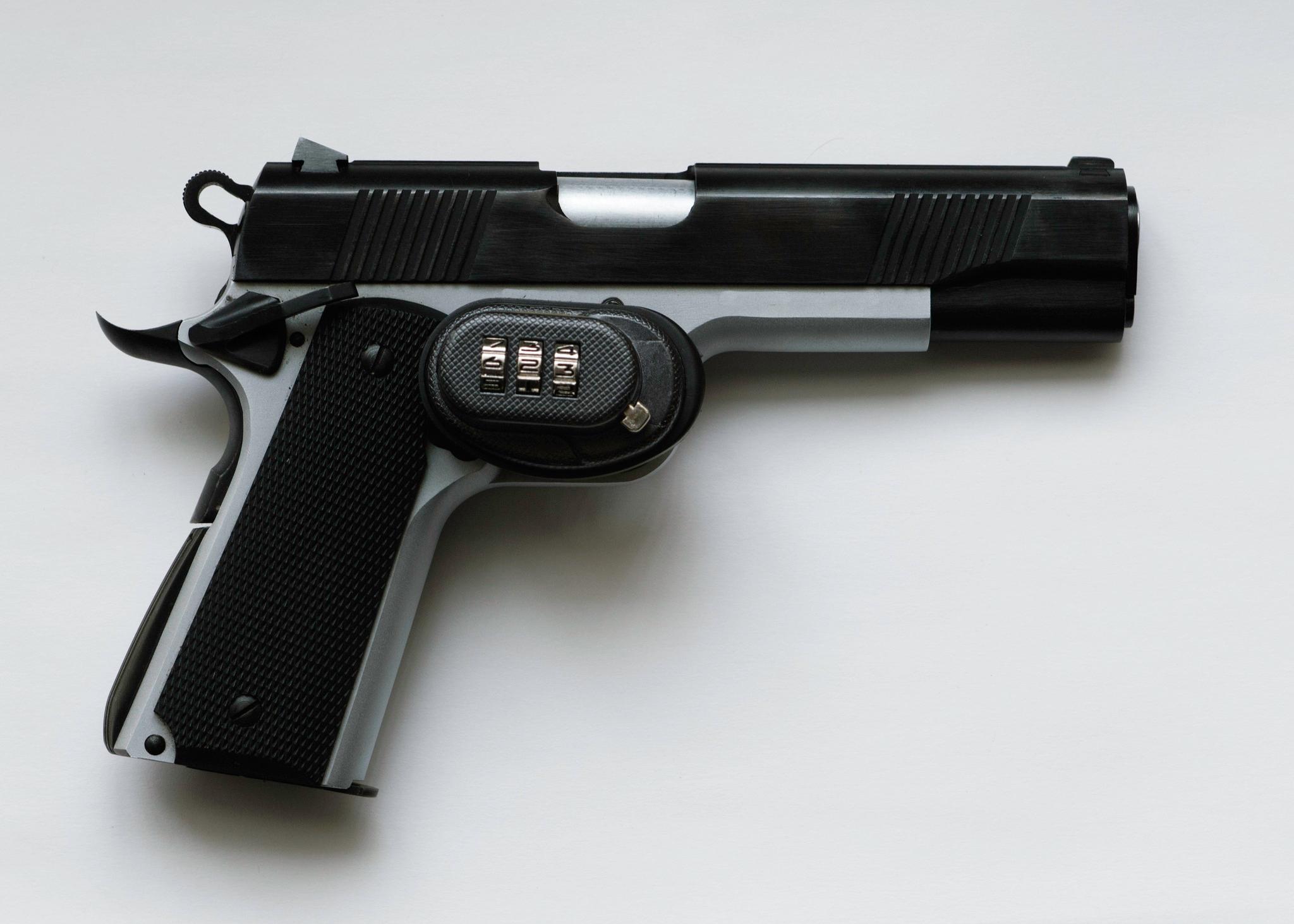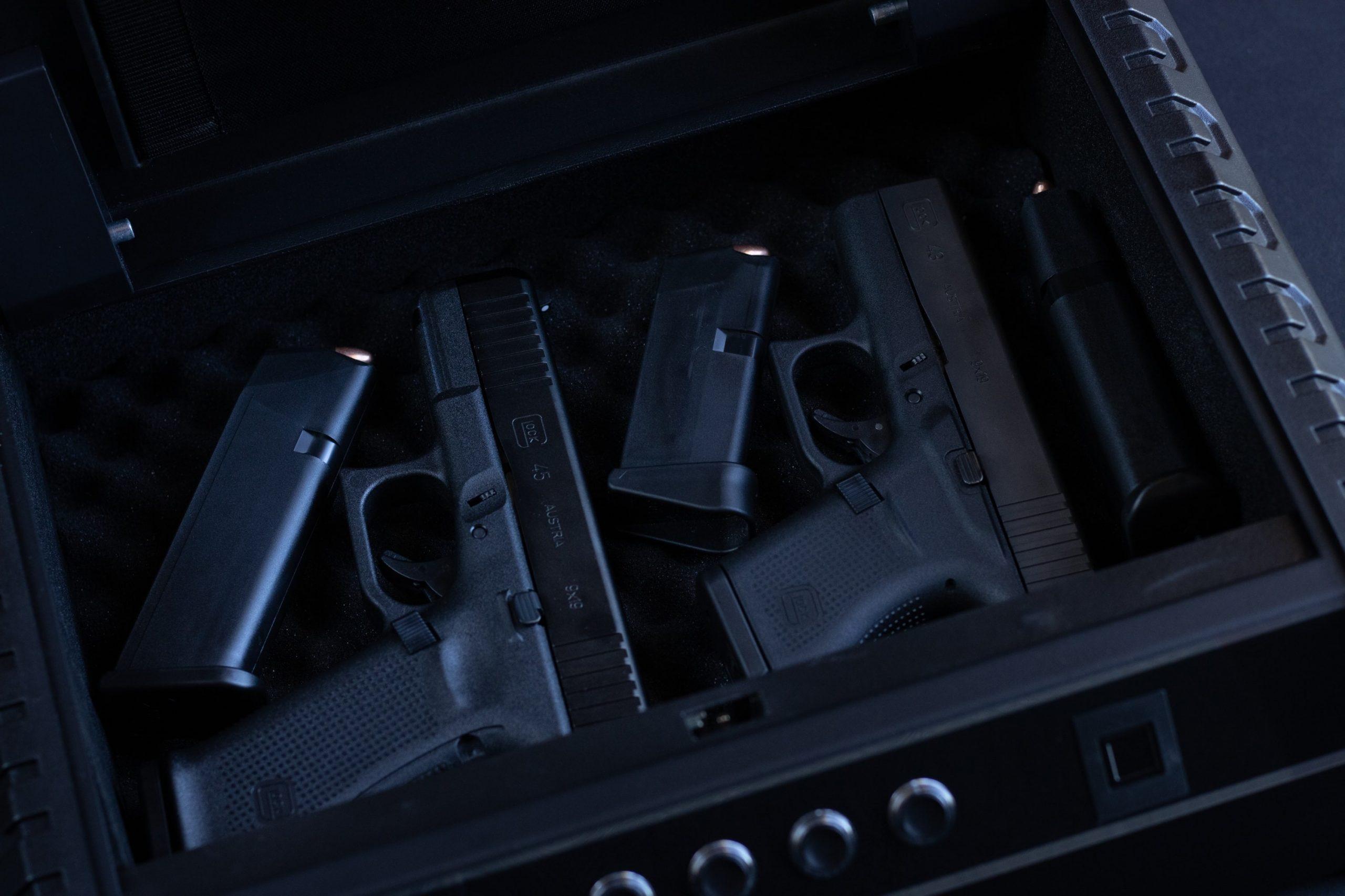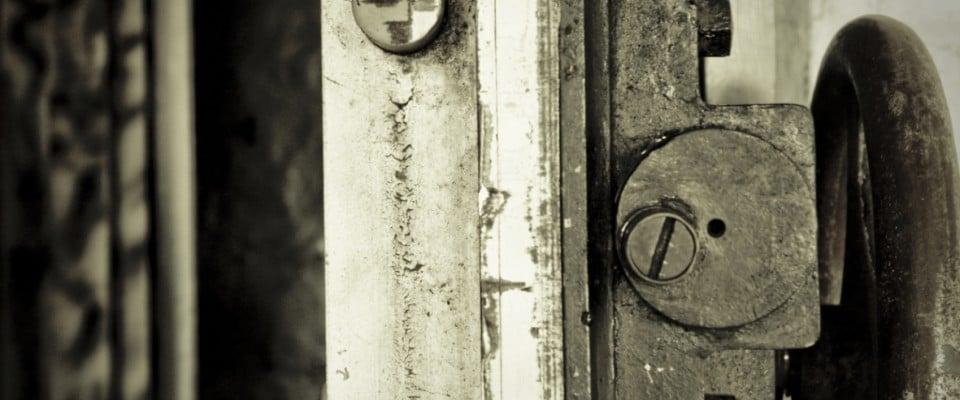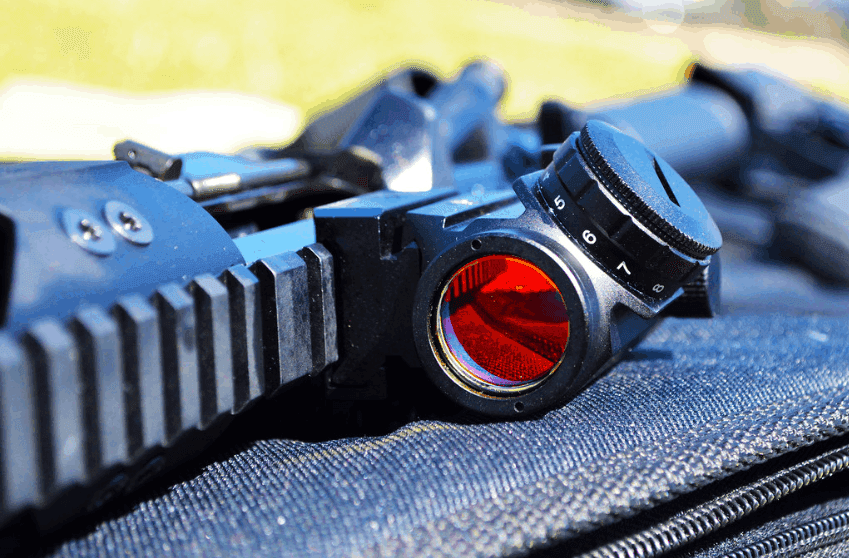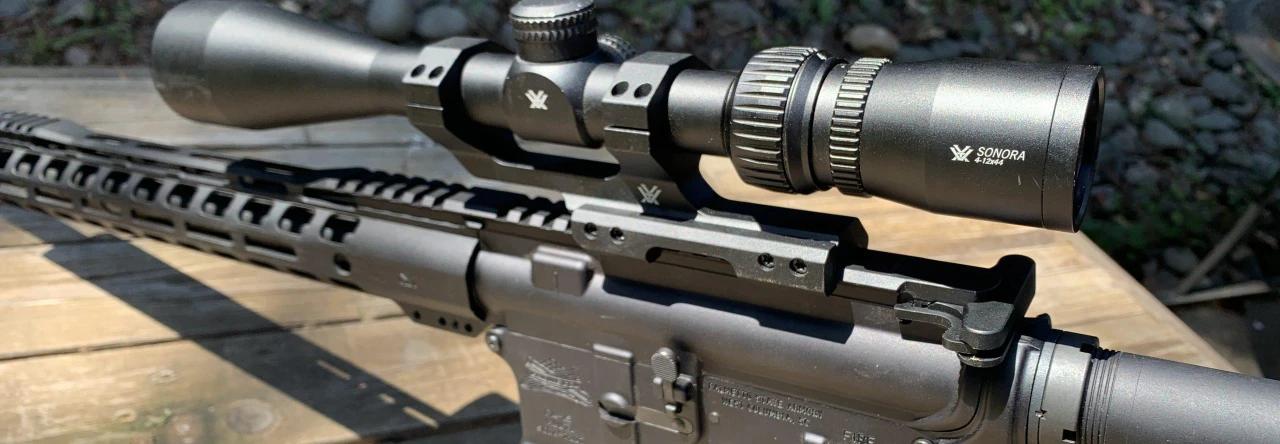Glock 43 Review: The Top Carry Glock? [Hands-On]
Is the slimline Glock 43 the best striker-fired carry gun on the market today? We put this polymer frame single stack 9 under the microscope then melted it down on the range to help determine if this svelte subcompact is right for you.
Written By
Michael Crites
Licensed Concealed Carry Holder
Reviewed by
Editorial Team
Learn About The Editorial Team
Share:
Products are selected by our editors. We may earn a commission on purchases from a link. How we select gear.
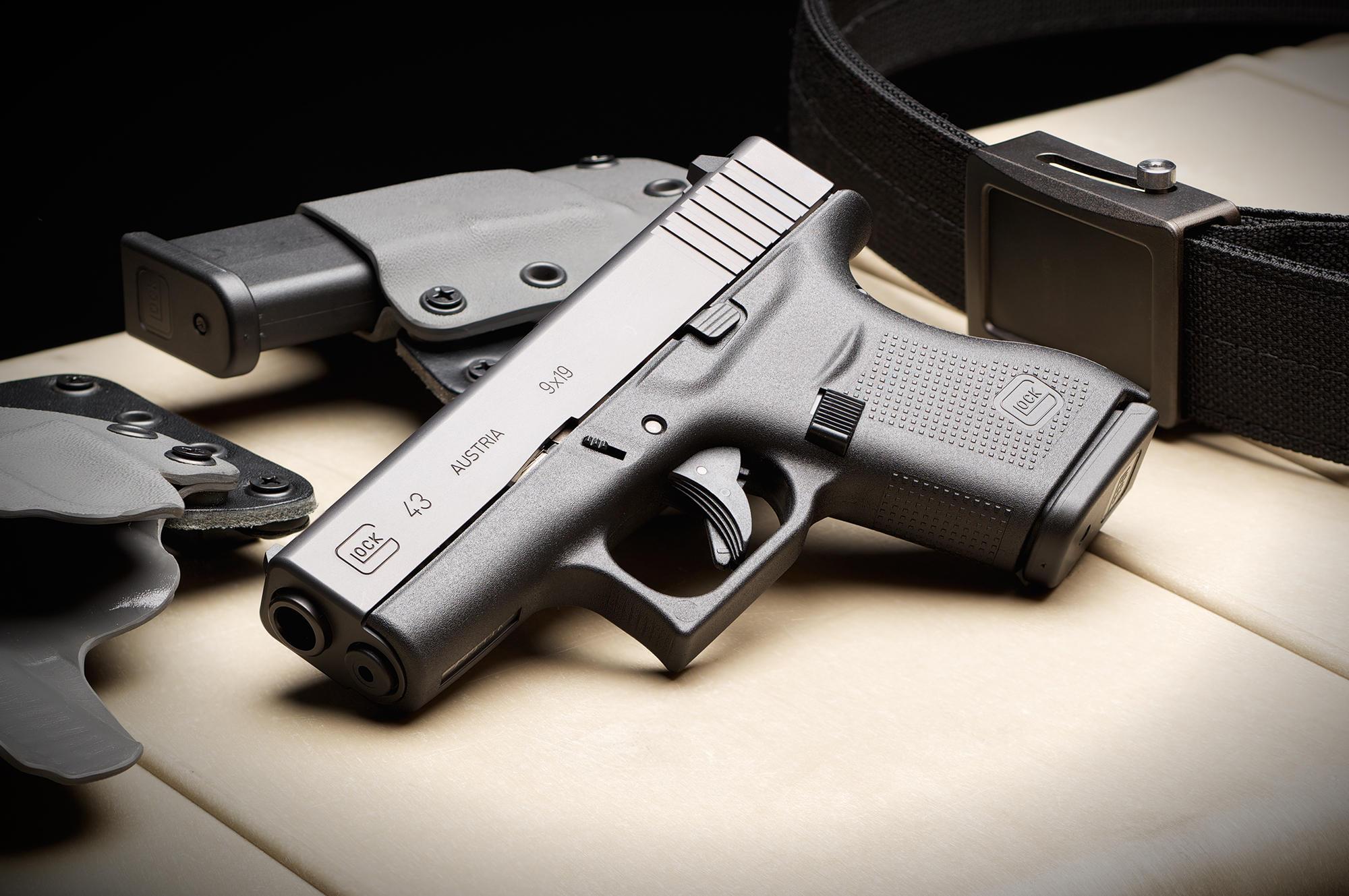
Updated
Jul 2023
Is the slimline Glock 43 the best striker-fired concealed carry firearm on the market today? We put this polymer frame single stack 9 under the microscope then melted it down on the range to help determine if this svelte subcompact is right for you.
In This Article
History
Glock handguns from the very start were designed as standard-sized double-stack pistols, with the Austrian military’s P80 9mm pistol going on to become the Glock 17 in the early 1980s. Even dropping down to the “compact” Glock 19 or mullet set up of the G19X still makes for a large gun, standing 5 inches high with a 15+1 round capacity, 30-ounce loaded weight, and a 4-inch barrel.
It wasn’t until Glock introduced the Glock 26 in 1995 that the series lost inches and ounces significant enough to be considered a subcompact, shedding almost an inch in length and height as well as a quarter-pound in weight while still having a 10+1 shot standard magazine capacity.
However, the G26 “Baby Glock,” with a double stack mag, was still every bit as wide– 1.26-inches– as the standard-sized G17 that preceded it by over a decade. The G43’s overall length is just 6.26 inches, about a quarter-inch less than the G26.
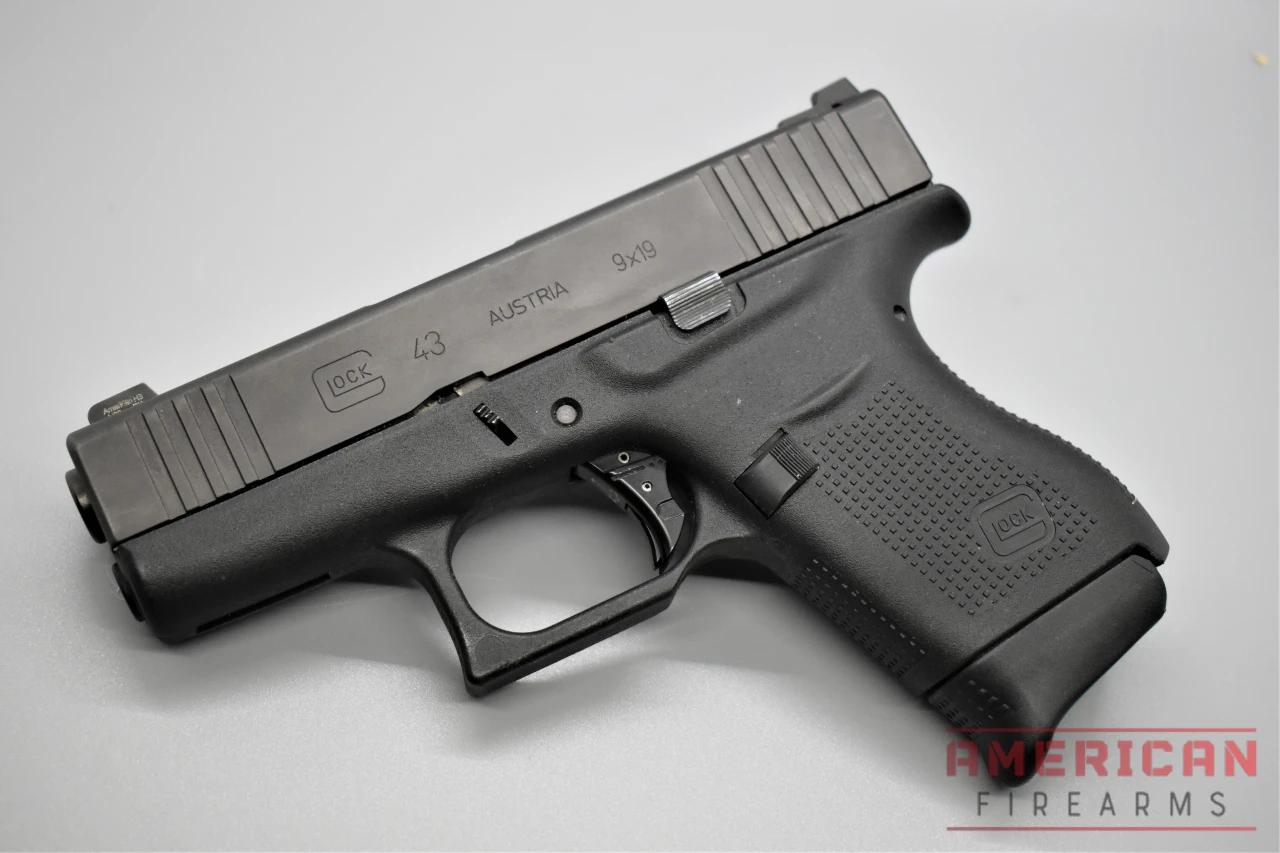
Further, in a key aspect for those with smaller hands, the trigger distance from the back of the grip is only 2.6 inches. While the Austrian polymer pistol giant had dipped its toes in the slimline pool before the G43– the Gen 3 G36 in .45ACP and the Gen 4 G42 in .380ACP come to mind– the 9mm has become the people’s champ when it comes to carry guns in the past decade.
The result was that the G43 turned out to be such a runaway hit, as a perfect concealed carry pistol for Glock fans, duty, and civilian use, that Glock sold over one million of the slimline 9mm handguns within the first three years on the market — and it’s also one of our favorite Glock pistols.
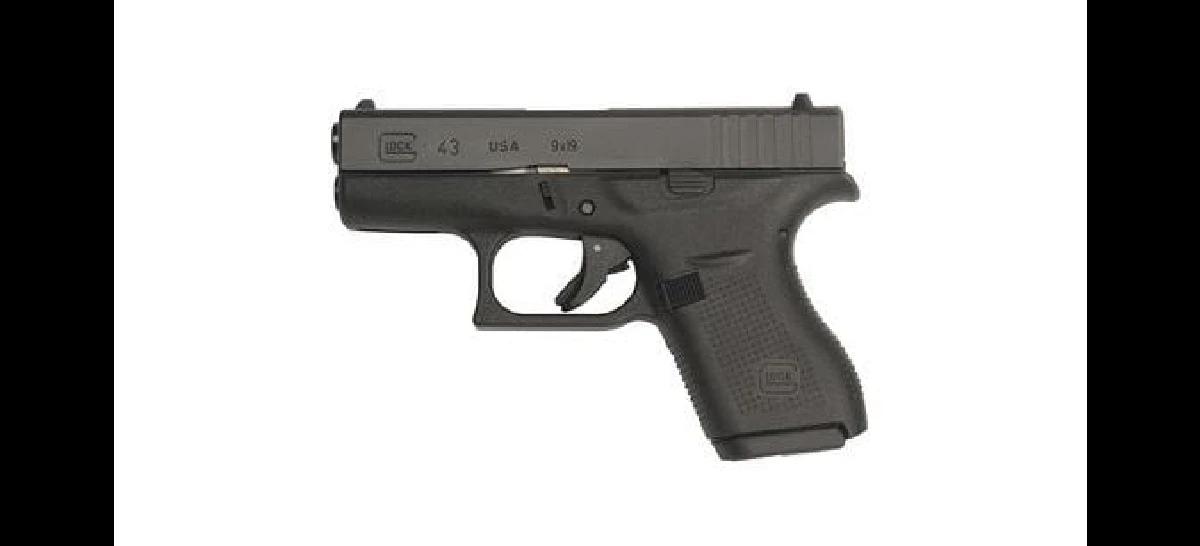
$420.99

43
EXCEPTIONAL
Performance Scores
Specifications
Caliber: | 9mm Luger (also commonly known as 9mm) |
Action: | Single-action striker-fired |
Capacity: | 6+1 standard |
Barrel Length: | 3.41 inches |
Overall Length: | 6.26 inches |
Overall Height: | 4.25 inches with standard mag inserted |
Overall Width: | 1.06 inches at maximum / 0.87 across the slide |
Safety Devices: | “Safe Action” trigger safety / firing pin safety / drop safety. No factory option for a manual safety lever |
Weight: | (with an empty magazine inserted) 16.23 ounces |
Weight: | (with loaded 6-round magazine inserted) 20.64 ounces |
Sights: | Serrated drift adjustable rear / fixed front / Glock pattern / plastic / replaceable |
Slide: | Steel with a matte black diamond-like surface treatment |
Barrel: | Steel with a matte black diamond-like surface treatment / 1:9.84 RH twist |
Grip frame: | Non-fiberglass reinforced polymer |
Features
The G43 as seen on the current market since its introduction has been what Glock classifies as a Generation 4 pistol. Common across all Gen 4 Glocks is a Rough Textured Frame (RTF) surface designed to enhance traction while the front of the grip front is without the usually awkward finger grooves seen on prior Gen 3 Glocks.
Another commonality with Gen 4 pistols is an upgraded dual recoil spring assembly that noticeably reduces the felt recoil during the shooting cycle while also increasing the gun’s lifespan as the recoil impulse is the main source of wear on any handgun.
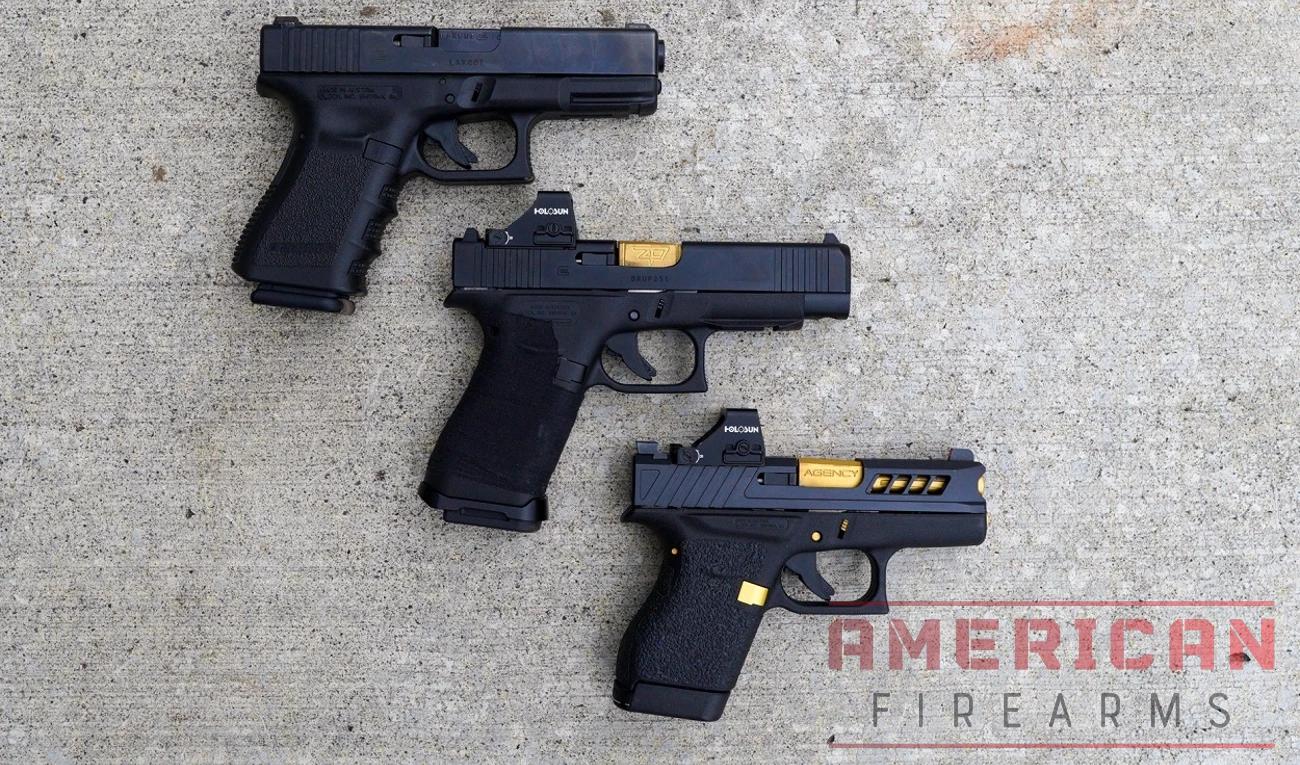
The Gen 4s also have an enlarged and reversible magazine release catch that can be switched by the user to the right from the standard left side of the pistol (for use by a right-handed shooter) without additional parts.
One thing the G43 has that no other Gen 4 Glock comes standard with besides the G42 is a built-in beaver tail design which allows the shooter to acquire a higher grip while helping to prevent the bugaboo common to “pocket-sized” semi-auto pistols: slide bite.
Finally, the extractor on Glock pistols doubles as a Loaded Chamber Indicator (LCI), both visually and physically indicating whether there is a cartridge loaded in the chamber.
Controls
The Glock 43 comes directly from the factory with its primary surface controls– slide stop release and magazine release– oriented for use by a right-handed shooter. While the mag release can be swapped over to the opposite side of the gun’s frame, there is no option for a left-handed (mounted on the right side of the pistol) slide stop release button.
The only ambi control is the take-down lever, used for disassembly.

We found the controls to be functional, although the standard slide stop release was a bit hard to actuate due to the high fence around it as part of the frame design.
This shortcoming can be overcome either by training to use the “slingshot” method to rack and release the slide or installing an aftermarket extended lever such as the one made by Vickers Tactical.
Purpose? Concealed Carry
The Glock 43, from its inception, was pitched for carry use, be it as an off-duty piece or backup gun for law enforcement or as an EDC handgun for those concerned with self defense needs.
It certainly fits that outline, being similar in size to such popular past conceal carry classics such as the Beretta Cheetah/Browning BDA, Ruger LCP, or Walther PPK but chambered in 9mm rather than .380ACP. The Glock 43 will work with any carry orientation — appendix carry, IWB carry, shoulder holster, ankle carry — even pocket carry — you name it and the G43 will conceal with the best of them.
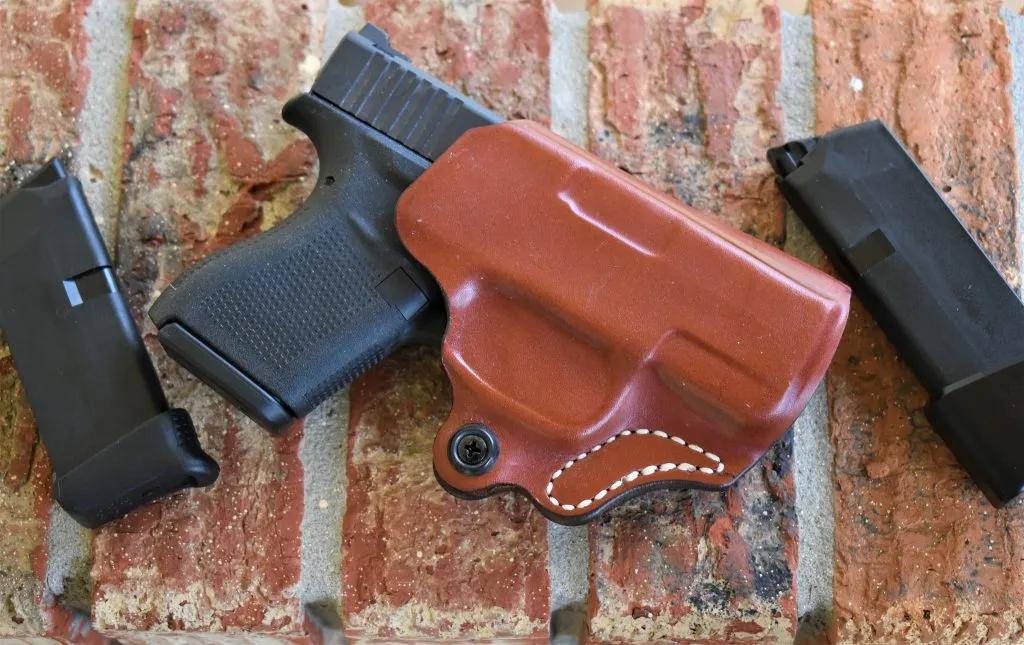
While it shoots well, the G43 should not be considered a plinker or target pistol. It’s core purpose is self defense and carry use, which is baked into every aspect of the Glock 43.
Further, although it has 6+1 rounds of ammo on tap, the compromise of it being so compact makes it less than ideal for home defense where larger guns such as a Glock 17– which has a 17+1 shot magazine capacity, the ability to mount lights and lasers on an accessory rail and has a longer sight radius – would make a better choice. These small guns come with compromises, no doubt.
Magazines
Glock ships the G43 with a flush-fit 6-round magazine with a very slim baseplate, obviously made with concealability in mind.
The gunmaker uses a unique polymer exterior coating on the metal-framed single stack magazine body that reduces the likelihood that the mag is damaged when dropped while protecting the frame from corrosion from things like sweat when carrying inside the waistband.

The staggered single stack magazine has five witness holes in the rear to visually confirm round count. It has mag catch indents on both sides to accommodate magazine release buttons mounted on either side of the pistol.
We found no issue with the Glock factory mags, as they dropped free whenever released. They can be disassembled for cleaning by depressing the take-down button in the center of the baseplate.
For those hungry for more rounds than the G43’s standard 6+1 layout, there are a variety of excellent magazine extensions on the market from Pearce, Vickers Tactical, and Taran Tactical that can add up to three extra rounds while simultaneously extending the length of the grip.
Sights
The Glock 43 is most encountered with the factory polymer Glock sights with a 5.24-inch radius from the front white post to the angled U-notched rear sight.

These sights are functional but, should the user prefer better models, are easily changed out with the help of a couple of easy-to-find tools. For those who prefer factory-installed options, Glock makes versions of the G43 with Glock Night Sights, termed GNS models, as well as a steel sight variant.
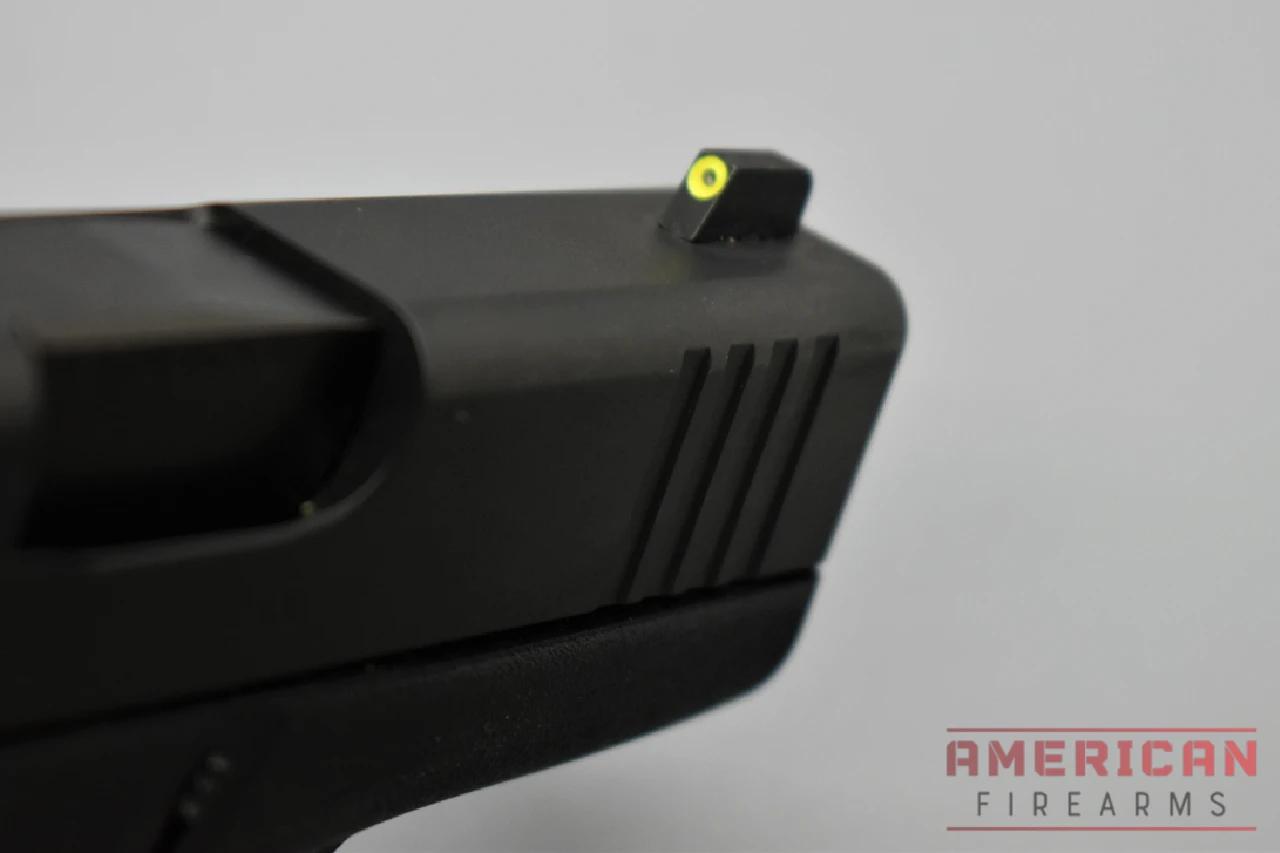
Be aware that GNS and steel-sighted models of the G43 are most often found in so-called “blue label” Glocks, meant for sale through law enforcement channels as a duty gun, which can be a little harder for consumers to find.
Trigger
The G43 comes with the standard Glock trigger, with a pull weight of about 5.5 pounds and roughly half-inch of travel until it breaks, then slightly less than that for the reset. My testing confirmed this pull with predictability, shot after shot.

The factory Glock trigger is functional but feels a little springy, a common complaint on Glocks. While utterly reliable, those who want a crisper trigger pull can opt to replace the OEM pack with an aftermarket one.
I upgraded our test gun after 1,000 rounds with an SSVI Tyr Trigger, which has a bit more leverage — an upgrade we highly recommend for improved accuracy for the firearm.
Performance
Reliability
Glock pistols use a short recoil, locked-breech action with a well-designed slide-mounted extractor and dual recoil springs.
What this means is the G43 has an action and layout that should produce a reliable firearm. We proved this hypothesis on the range with a variety of loads, running 1,000 rounds without issues. This included commercial full metal jacket training rounds in 115- and 147-grain loads, NATO-marked military surplus rounds with 124-grain FMJ bullets, steel-cased 115-grain imported ammo, and personal protection rounds whose bullet weight fell within that range.

The selection spanned factory loads from the likes of Barnaul, Federal, Hornady, PMC, Sellier & Bellot, Winchester, and Wolf.
In short, if it was 9mm Para, the G43 used it without an issue.
Ergonomics
The G43 was designed to be as small and compact as possible while still being able to accommodate a 9mm round and work reliably, no small task.
Speaking to this design philosophy, the pistol grip itself is extremely abbreviated, running about 2.75 inches from the bottom of the slide to the end of the magwell. With that, it makes carrying such a small gun a breeze, but we were able to only keep two fingers on the grip body while the pinky cupped the bottom of the gun.
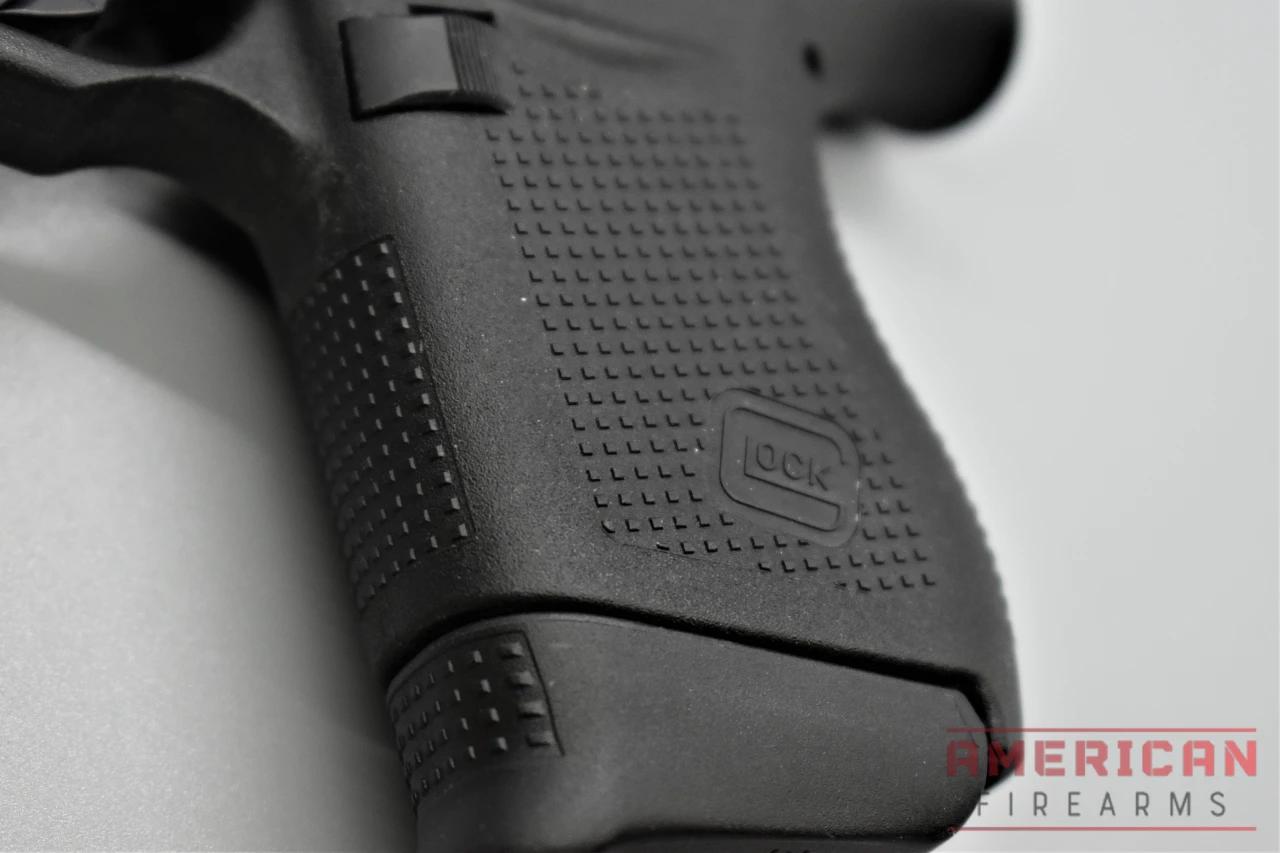
While less than ideal, the G43 was still controllable, even when shooting full-powered defensive ammo, we think in large part to the fact that the back of the grip, with its extended beavertail flare, enabled the palm to correct the balance.
We found out that adding even an inch or so to the bottom of the grip, via an extended magazine, helped with the ergonomics greatly and enabled us to shoot with more control.
Fit and Finish
Glock has been making the same gun for 40 years. We are not even kidding.
While the company is now on its 5th generation of such guns, and they have shrunk it to smaller formats like the G43, lengthened it to larger ones such as the G34 longslide, and offered it in every caliber from .22LR to .45 ACP, it is still essentially the same reliable design.
With that in mind, Glock has figured out how to make that pistol and make it very, very well.
It is little wonder that two out of every three law enforcement agencies, as well as a number of the militaries in the Free World, have adopted Glock handguns in assorted models. With that, our G43 met expectations, and the gun, while utilitarian, proved to be serviceable with no complaints as to its construction and assembly.
Range Report
The G43 is meant as a carry gun, a task in which it would have to perform well inside a relatively short-range from shooting contact-close out to 15 yards with a maximum in a self-defense situation pushing out to 25 yards, the latter simulating an armed engagement, for instance, in a rural area.
When testing for practical accuracy at such distances, I had no problem ringing a torso-sized plate in rapid-fire when drawing and shooting from concealment.
Breaking out the calipers for the record, in slow fire 3-round strings from 7 yards I was able to keep 2.5-to-4-inch groups in the center mass of a paper target with the smallest of those belonging to Hornady’s 9mm Luger 115 grain FTX Critical Defense loads.
The G43 was absolutely reliable in our evaluation, running mags and hitting targets with rock-solid consistency. I had no jams or failures to report.
Takedown & Maintenance
The Glock 43, like the rest of the company’s pistols, disassembles to five basic components– slide, barrel, recoil spring assembly, grip frame, and magazine– in short order without tools. Always make sure the gun is unloaded before starting any maintenance as the takedown process includes releasing the tension on the striker assembly by pulling the trigger.
In our testing, we found the G43 easy to take down. It came with Glock’s distinctive bronze-hued durable lubricant visible on the internals and we added no additional products to the pistol before taking it to the range for a 1,000 round evaluation.

Afterward, it was easy to take down, clean, and maintain for the next round of use. The only reportable wear we could document on inspection was a light ring on the top of the tilting barrel where it interfaced with the slide during the recoil process.
Glock recommends that the recoil spring be replaced after about 5,000-7,500 rounds, which is twice the amount on previous generations of their handguns.
Beyond the company’s manual, it is generally a good idea to change the rest of the springs in the pistol (Firing Pin Spring, Firing Pin Safety Spring, Extractor Depressor Plunger Spring, Magazine Catch Spring, Standard Trigger Spring, Slide Lock Spring, Slide Stop Lever Spring) after about 15,000 rounds.
Those not comfortable with doing this swap out themselves can take their G43 to just about any competent gunsmith to accomplish. The good news is that most average gun owners will never reach this level of use in their lifespan but when they do, the combined price of these springs is usually less than $40. Other than replacing springs, a Glock generally has a reputation of running forever, with many users documenting 100,000 rounds or more through their guns.
Glock’s polygonal barrel rifling has a good reputation for reducing wear and tear on the barrel and creates a better bullet-to-barrel fit, enabling the guns to endure exceptionally high round counts.
Shortcomings
The G43 is a decidedly compact and concealable pistol, and that focus on concealability means there just isn’t a lot of grip to work with, and Glock didn’t give the G43 the same modular backstrap system that all other Gen 4 guns enjoy, which allows users to swap out the backstrap the change the palm swell point of the grip without changing the user’s grip angle. With the G43 you get the grip Glock gave ya.
Of course, there is always the option of sanding down or, alternatively, building up the grip via hockey tape or slip-on aftermarket sleeves, but the lack of extra backstraps is kind of a drag when you consider the feature is widespread in the Glock catalog.

Fans of weapon-mounted lights and lasers also will find no love from the Glock 43 as it has no accessory rail. This is definitely not a bedside gun. While some trainers bemoan the use of WMLs on carry guns as being unnecessary, it would still be a nice option for users who didn’t have the same position.
Finally, the G43, as with most Glocks, requires the user to pull the trigger during the field strip/disassembly process, which can lead to a negligent discharge if proper firearms safety rules aren’t followed. Likewise, while some competitors such as Ruger, Smith & Wesson, and Taurus offer comparable guns with a frame-mounted manual safety lever, Glock does not have such an option for the G43.
Alternatives
In a collective groan from those who bought a Glock 43 in the first three years while it was on the market, Glock introduced the G43X in 2018.
Still, a slimline gun that uses a single-stack magazine, the G43X is almost an inch taller than its older brother while sporting the same 6.06-inch overall slide length.
The height, however, is more akin to that found on the Glock 19, a double-stack 9mm with a 15+1 capacity but without the bonus of having the G19’s accessory rail or sight radius.

Keep in mind, however, that while you can simply expand the Glock 43’s capacity and grip length through the use of an extended magazine baseplate, you can’t make the grip of the G43X any shorter.
Besides a 10+1 shot magazine capacity in 9mm, the G43X is an updated 5th Generation design that includes the very accurate Glock Marksman Barrel that uses different rifling and front slide serrations. We included the G43X in our list of top Glocks, but the 43 has as much claim to that list IMO.
For those wanting more capacity than the standard Glock 43, the G19 or even the G26 “Baby Glock” may be a better solution than the G43X. For those on the opposite side of the spectrum who want capacity and size but something just as slim the Glock 48 is winning fans every day.
Other “Micro 9s”
Since the Glock 43 hit the market, one that it dominated when it first came out, lots of other gunmakers have jumped into the same neighborhood to give them some competition.
This includes the FN 503, which is a little heavier due to using more steel in its construction, but no less reliable, as well as the S&W M&P Shield — another highly recommended & proven carry gun.
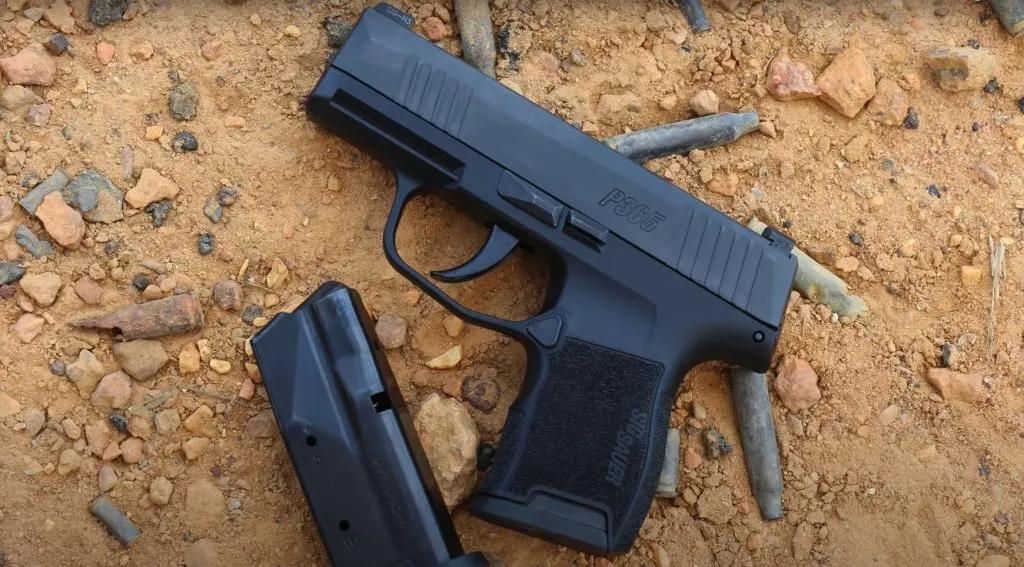
Further, a new wave of “Micro 9s” such as the Sig Sauer P365 has surfaced since 2018, which provides a higher magazine capacity over the G43 without growing in length or height. Still, over a million folks have opted for the G43 with their own money, which is an endorsement few other guns have in their corner.
Pros and Cons
The Good:
- Good practical accuracy within self-defense distances
- Solid construction and reliable design
- Proven Glock reliability with various types of ammunition
- Compact and easily concealable for carry purposes
- Plenty of aftermarket support
The Bad:
- Compact grip may be difficult for some users and lacks modularity
- No accessory rail for weapon-mounted lights or lasers
- Factory trigger may feel a bit springy
- Limited capacity (6+1 rounds)
- Tiny slide stop release
The Shooter's Scorecard
So… how does the Glock 43 stack up on our 10-point scale?
Accuracy: 6/10
The Glock 43 gives you good practical accuracy within self-defense distances but may struggle with anything smaller than a torso-sized target at 20+ yards.
Ergonomics: 5/10
The compact grip is decidedly small, making for painful extended range sessions. Controls are functional and very Glock-like.
Features: 6/10
You get the Gen 4 enhancements, and the beavertail design helps with control, but there’s no modular backstrap support, accessory rail, or MOS variant available for the 43.
Fit and Finish: 8/10
The G43 has the same solid construction and reliable design found on Glocks for the past 40 years.
Reliability: 10/10
You get proven Glock reliability, just in a smaller package. Runs any kind of ammo you could want.
Value: 7/10
Glocks are generally a pretty solid value, and the G43 is no different, but sights and triggers tend to be the first upgrades folks look for.
Recap
Delivered to the market by a company that won over law enforcement and military users with almost unstoppable regularity for decades, the Glock 43 had the benefit of inheriting a mature design before it even left the drawing board.
The G43 is incredibly popular because it’s one of the most compact 9mm pistols available, it shines for everyday use as a carry gun and has a wide array of aftermarket support when it comes to holsters and upgraded components.
While it is very easy to choose a worse EDC handgun than the G43, it is perhaps even harder to find a better one.
Sign up for our newsletter
Get discounts from top brands and our latest reviews!




